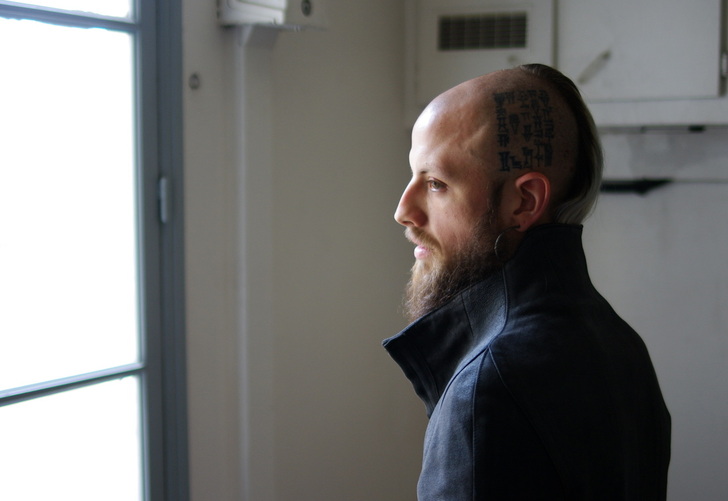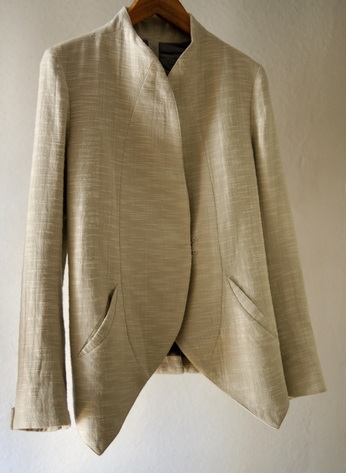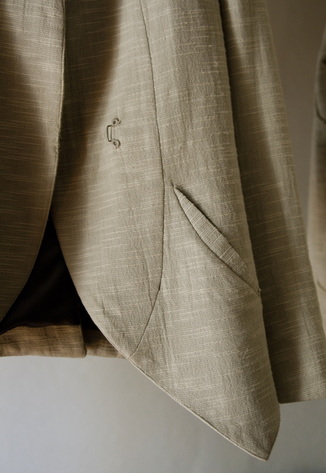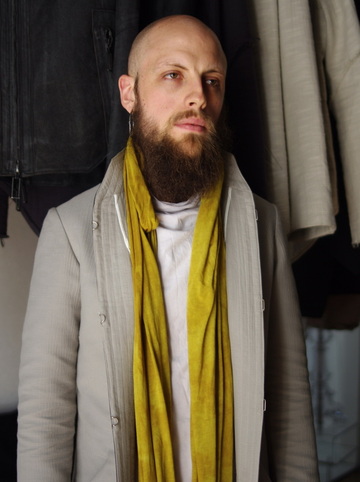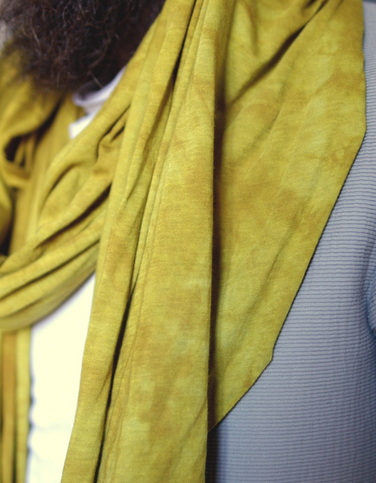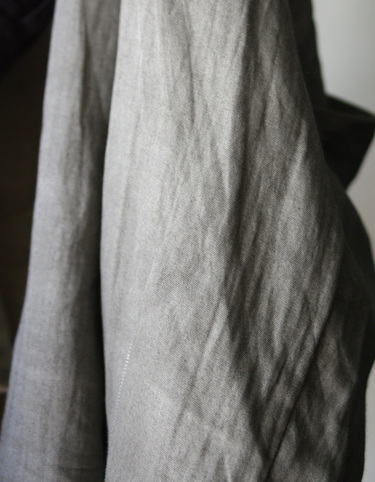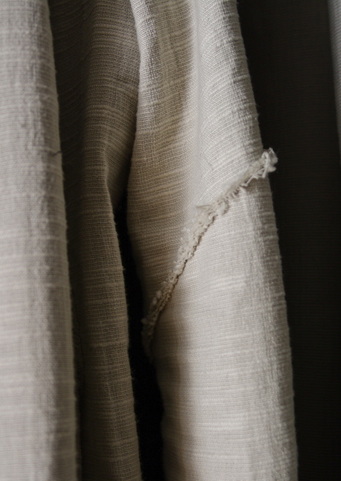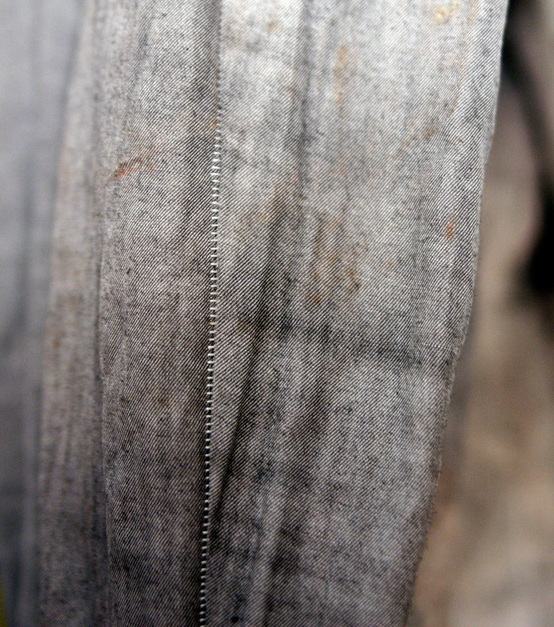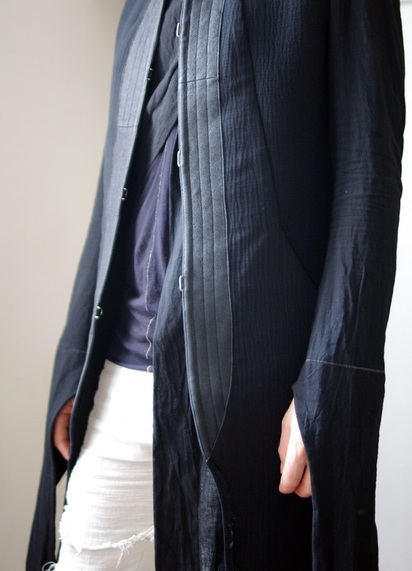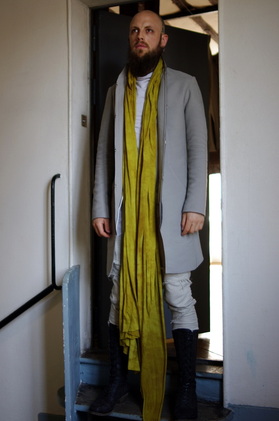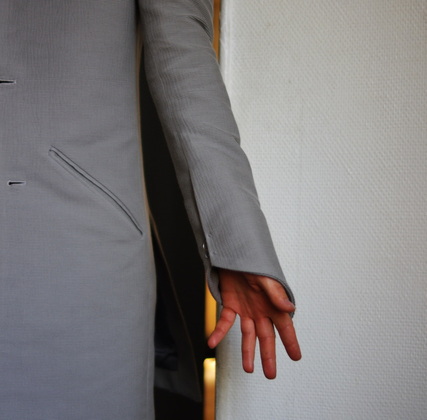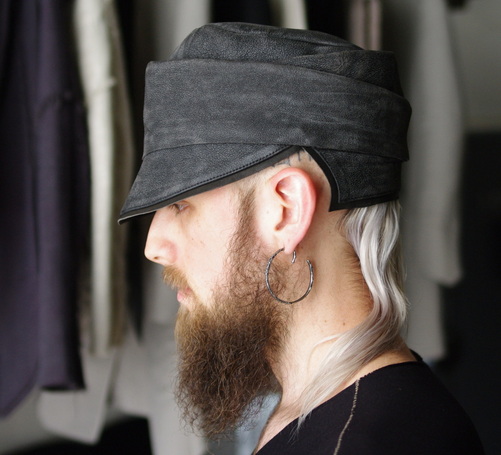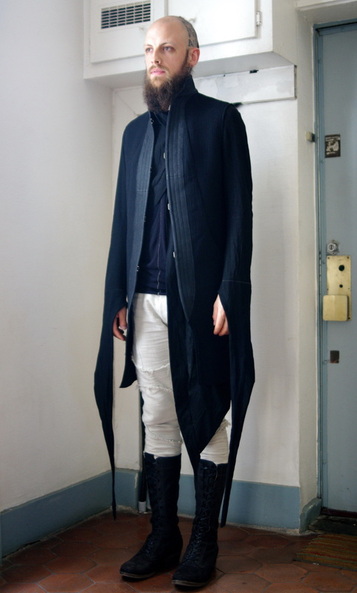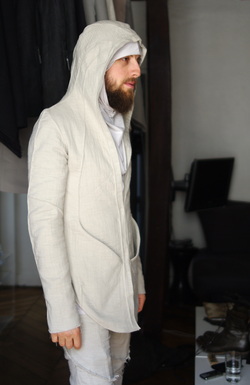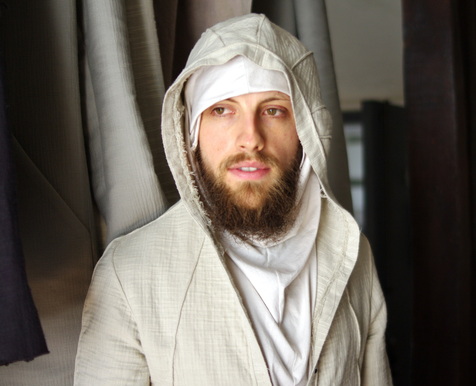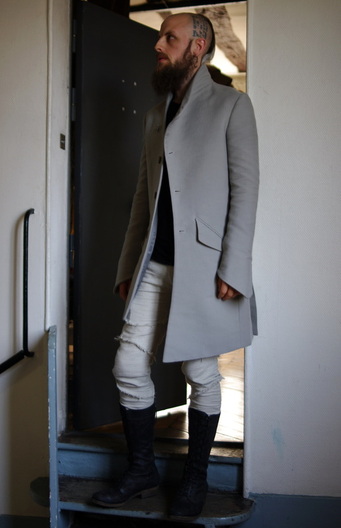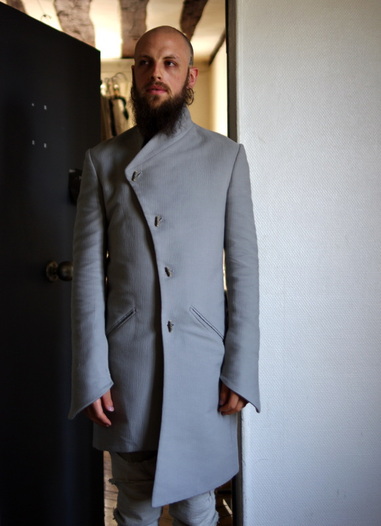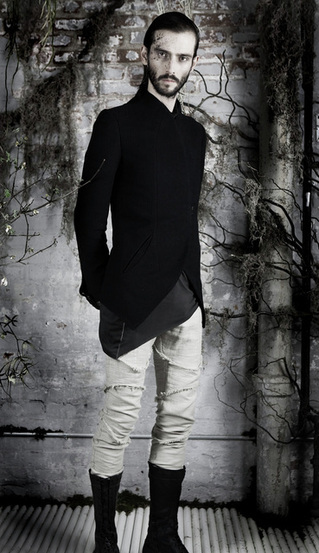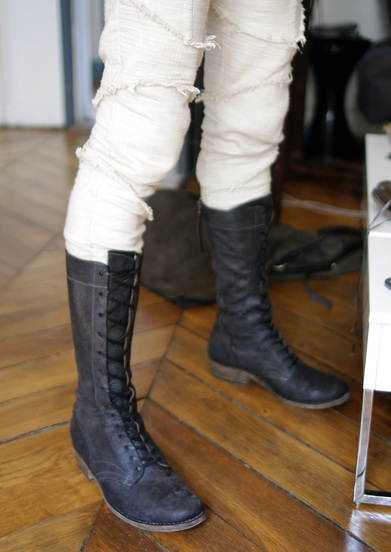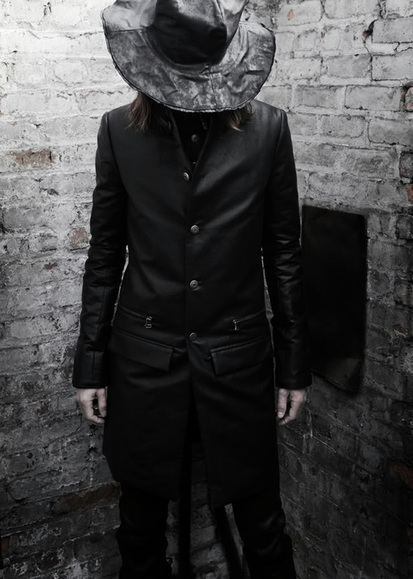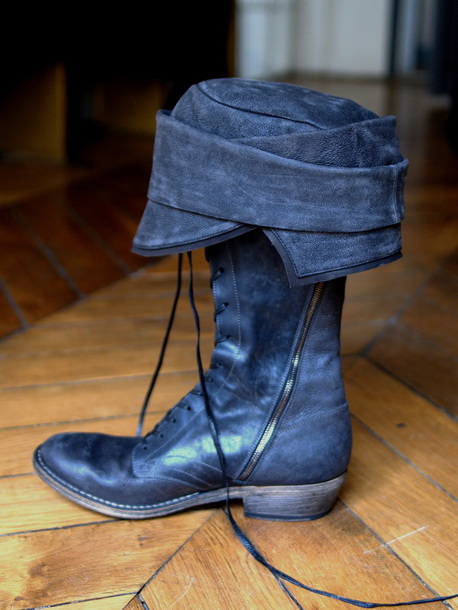An Eye for an Eye. A Spy for a Spy
InAisce SS 2011
Identity
InAisce is Jona. Jona is InAisce. Asserting this identity is not tautological, nor is it intending to be biographical.
Jona embodies InAisce, because he belongs to this category of designers who, from Yohji Yamamoto to Damir Doma, wear the clothes they design.
Jona embodies InAisce, because he’s as one with his garments. His garments are his body, his body is his work – his faces says it all, which is a manifesto.
A shaved head. A plane surface.
A thick, messy – savage - beard. A matter – a volume – a colour.
And a tatoo on the temple, articulating plane and volume in a line which fits – and redesigns – the shape of the face.
Jona is InAisce - in this alliance between chaos and geometry, between rigour and blur, nature and artifact, matter and sign, meaning and its suspension. For in InAisce are associated a special attention to fabrics and a concern for construction which redefines the link between clothes and anatomy.
Jona embodies InAisce, because he belongs to this category of designers who, from Yohji Yamamoto to Damir Doma, wear the clothes they design.
Jona embodies InAisce, because he’s as one with his garments. His garments are his body, his body is his work – his faces says it all, which is a manifesto.
A shaved head. A plane surface.
A thick, messy – savage - beard. A matter – a volume – a colour.
And a tatoo on the temple, articulating plane and volume in a line which fits – and redesigns – the shape of the face.
Jona is InAisce - in this alliance between chaos and geometry, between rigour and blur, nature and artifact, matter and sign, meaning and its suspension. For in InAisce are associated a special attention to fabrics and a concern for construction which redefines the link between clothes and anatomy.
Beard
The fabrics used by InAisce give a good place to textures, combining raw matters with weaving patterns whose refined nature act as a counterpoint to the former.
The fabrics here are never smooth, nor flat, but always worked with irregularity – or variation – in shades as in matter. Irregularities in matter, grained leather, streaked, hatched, striped, wrinkled fabrics... Irregularities in shades, induced by the variations of light on the patterns or by the dyeing process, as seen on this oversized scarf.
Irregular without being rough, raw, but not unpolished, fierce and yet carnal, InAisce’s fabrics have the charm given by the passage of time and the patina of use.
Along with those natural fabrics (rough cotton, linen, leather…) which bear the mark of their origin, InAisce favours colours evoking nature and the four elements dear to the ancient Greeks : browns, ochres from the Earth, off-white from the Air, oranges and yellows from Fire and blue greys from Water – sometimes intertwined and united on the same garment.
InAisce does not ignore black, but instead he gets around it or diverts it, always pulling it towards the nearest complementary colour, grey, blue, etc. Therefore his work does not travel from obscurity to light, as it is frequently the case for the « dark » designers, but from light to obscurity – which is another way to define depth. At last, his work is fractal, because his fabrics are meant to be perceived at different scales from different distances, making them sparkle and shimmer.
Tatoo
The cuts of InAisces garments are anatomical - and at the same time they display a geometrical, almost minimalistic simplicity, which can particularly be read in the design of the collars. Besides, those cuts draw a fluid, slender silhouette.
The guiding lines of the garment thus fit the singularities of the body to highlight them, like the cutting around the ear on this grained leather cap.
Other cuts extend the shapes of the body, like those extralong sleeves, which can also be wrapped around the hand, like a mitten or a bandage.
This use of the garment, between ligature and dressing, contributes, as it was the case in Beuys’s work, to its redefinition – as a prothesis, an enveloppe and a protection.
InAisce’s singularity lies in the construction of the garment, whose guiding lines, emphasized by the accentuated seams, do not repeat those of the body, but move or even impede them. This logic pertains, once again, to the tatoo, indeed inscribed at the surface of the body, which it follows – and yet possessing its own identity and autonomy, thus able to tally with those of the body as to contradict them.
However, those geometrical lines do not go against the anatomy: distinct from it and yet echoing it, they somehow compose harmonics to the body and its architectonic. As for this double seam on the thigh of this pants, impeding and duplicating at the same time the shape of the knee.
The asymmetry, another constant in Aisce’s style, also is anatomical, which does not nullifies the proportions of the body, nor its fundamental lines, but moves them in order to highlight them, as in Ann Demeulemeester or Damir Doma.
Civil War
Are InAisce’s garments inspired from a given historical period? It is hard to tell, even if, here and there, references to the Civil War uniforms seem to show. But those references are as reduced, as blurred, or filtered through its contemporary rewriting.
Then InAisce’s garments are anachronical in two counts: they do refer to another time; but this time can’t be identified precisely. Here the reference to a historical wardrobe is devoid of romanticism – at it would be the case in Ann Demeulemeester, at the same time filled with folklore and nostalgia -; it is, in its form, modern: the quotation is not reverential, nor is it dictated by melancholy: it is a predaceous one. It also may refer to an underlying, contained violence – not anymore set outside the object, but inside – a civil war.
Once again, the tatoo beared by Jona – an excerpt from the Hammurabi code – can be read as a metaphor of his work. The cuneiform writing of the code is no more figurative, when the hieroglyphics, for a good part, still are – and yet it is plastic, unlike the further forms of writing, in which the sign will wear away before its meaning. The historical reference is wrought by this same tension : still perceptible, but no more identifiable, summoned, but no more incarnate.
Christian MICHEL
Translation : Fabien C.
Translation : Fabien C.
Discuss the article here
